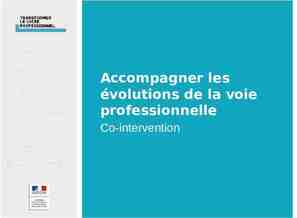Robert Morris (US, b. 1931) Installation at the Green Gallery,
52 Slides7.51 MB
Robert Morris (US, b. 1931) Installation at the Green Gallery, New York, polyhedrons made from 2x4 wood painted gray, 1963 Effective advent of Minimalism
Robert Morris, and Carolee Schneeman, Site, 1964, performance, New York (compare: below, left) Edouard Manet, Olympia, 1863 (radical art icon) “The sensuous object, resplendent with compressed internal relations has had to be rejected.” (Morris)
Robert Morris, (right) Untitled (Tangle) cut felt 1967, (left) Untitled, (Pink Felt) 1970, cut felt, dimensions vary with installation. Process Art – “anti-form” or “post-minimal” sculpture Aleatory, depending upon gravity and chance, simple cutting process, “industrial” material
Robert Morris, Poster for Sonnabend Gallery show, 1974 (right) I-Box, 1961 (Neo-Dada, Duchampian mockery of “Artist” ego and myth of masculinity, originality, genius
Agnes Martin (Canadian-born American Minimalist Painter, 1912-2004) (left) Bones #2, 1959, Oil on canvas, 72 x 48 (right) Untitled, oil, ink & wash on canvas, 12” square,1961
Agnes Martin, The Dark River, (detail right) o/c, 75” square, 1961 Platonic idealism, meditative practice of “joy”
Humility, the beautiful daughter She cannot do either right or wrong She does not do anything All of her ways are empty Infinitely light and delicate She treads an even path. Sweet, smiling, uninterrupted, free. . . . Agnes Martin 1973 Photo of Martin in studio, 1973
Frank Stella (US, b. 1936) (right) Die Fahre Hoch, 1959 o/c. (left) Six Mile Bottom, metallic paint on shaped canvas, 118” H , 1960 (center, below) compare Jasper Johns, Flag, 1956 (in 1958 Castelli show) Post-Abstract Expressionism, Minimalism
Frank Stella, The Marriage of Reason and Squalor, II. 1959, enamel on canvas, 7' 7“ H “My painting is based on the fact that only what can be seen there is there. All I want anyone to get out of my paintings and all I ever get out of them is the fact that you can see the whole idea without any confusion. What you see is what you see.”
Frank Stella (US b. 1936) Quathlamba, 1964, metallic powder in polymer emulsion, 6’5” x 13’7” Painting-sculptures to comprehend phenomenologically and in a glance
Sources for Minimalism of 1960s (left) Barnett Newman with Cathedra, 1958 Abstract Expressionist “Sublime” (right) Kasimir Malevich, Russian Suprematist, White on White, o/c, 1918
Ad Reinhardt (US, 1907-1967), Painting, 1954-58, 78 x 78 in, Oil on canvas Source for Stella and Minimalism of 1960s Abstract Expressionist painter of the “Nothing”
“A square 'neutral, shapeless' canvas, five feet wide, five feet high, as high as a man, as wide as a man's outstretched arms 'not large, not small, sizeless', trisected 'no composition', one horizontal form negating one vertical form 'formless, no top, no bottom, directionless', three 'more or less' dark 'lightless' no- contrasting 'colorless' colors, brushwork brushed out to remove brushwork, a matte, flat, freedhand painted surface 'glossless, textureless, non-linear, no hard edge, no soft edge' which does not reflect its surroundings, a pure, abstract, nonobjective, timeless, spaceless, changeless relationless, disinterested painting, an object that is self-conscious 'no unconsciousness' ideal, transcendent, aware of no thing but art 'absolutely no anti-art.” Art as Art: The Selected Writings of Ad Reinhardt, New York: Viking Press, 1975, pp.82-3.
Donald Judd (US, Minimalist sculptor, 1928-1994). Untitled, cold rolled steel, 1964 (below right) Judd, Untitled, 1964, aluminum boxes; Judd, Untitled, 1978-9 six brushed aluminum hollow rectangles set at 14-inch intervals
A philosophy major at Columbia, Judd theorized his work in a 1965 essay, “Specific Objects”: “non-relational” objects that supersede the traditions of painting and sculpture
Sotheby installation: (at left), Donald Judd, Untitled, a stack of 10 stainless steel and red fluorescent plexiglass units stacked vertically in 9-inch intervals (detail on far left) (at right) Frank Stella, Nunca Pasa Nada, 1964, 110 x 220”, metallic powder in polymer emulsion on canvas
Donald Judd , (left) artillery shed interior with permanent installation of 100 titled works, mill aluminum, (each) 41 x 51 x 72 in. The Chinati Foundation, Marfa, Texas
Richard Serra, Splashing, 1968, molten lead left to harden, Leo Castelli, warehouse, destroyed Action / Process Sculpture
(left) Serra, One-Ton Prop, 1969; installation, 1969 of “prop” sculptures
Serra, Tilted Arc, a 120-foot curved Cor-Ten steel structure in New York City's Federal Plaza, destroyed in the spring of 1989 Site-specific commissioned public artwork
Maya Lin, Vietnam Veterans Memorial, polished black granite, 1982, Washington DC (below) Frederick Hart, Vietnam Veterans Memorial, 1984
Richard Serra, Torqued Ellipses, corten steel, 1997, Dia Foundation poster Bilbao 2005, A Matter of Time, huge permanent installation of eight bent steel sculptures is possibly the largest installation to ever be housed in a museum gallery. The work weighs about 1,200 tons, is over 430 feet in length in a 32,000 square foot gallery.
Carl Andre, American Minimalist Sculptor, b. 1935 ( 10 x 10 Altstadt Copper Square, Düsseldorf, 1967. Copper, 100 units, 3/16 x 19 11/16 x 19 11/16 inches each; 3/16 x 197 x 197 inches overall.
Carl Andre, Twelve Copper Corner, 1975; (right) Seven Steel Row, 1975; Brancusi, Endless Column, Tirgu Jiu Public Park, Rumaniz, 1938 “Brancusi is to me the great link into the earth and the Endless Column is, of course, the absolute culmination of that experience” (Andre)
Sol LeWitt (US, b.1928) Floor Structure Black, 1965, painted wood, 18 ½ x 18 x 82 in. “Ideas can be works of art; they are in a chain of development that may eventually find some form. All ideas need not be made physical.” “Paragraphs on Conceptual Art,” 1969
Sol Lewitt, Modular Open Cube Pieces (9 x 9 x 9) Floor/Corner 2 (Corner Piece), 1976
Lewitt, A Wall Divided Vertically into Fifteen Equal Parts, Each with a Different Line Direction and Color, and All Combinations 1970 "In conceptual art the idea or concept is the most important aspect of the work . . . all planning and decisions are made beforehand and the execution is a perfunctory affair. The idea becomes the machine that makes the art." Sol LeWitt: "Paragraphs on Conceptual Art," Artforum, summer issue, 1967
Lewitt, Wall Drawing #146, September 1972. All two-part combinations of blue arcs from corners and sides and blue straight, not straight, and broken lines; blue crayon, Dimensions vary with installation.
Sol LeWitt, Wall Drawing No. 681 C / A, 1993 Instructions: wall divided vertically into four equal squares separated and bordered by black bands. Within each square, bands in one of four directions, each with color ink washes superimposed, colored ink washes, (120 x 444 in.)
Vito Acconci, Following Piece documentation, installed in 1969 at Barbara Gladstone Gallery, NYC, black and white photographs with text and chalk, text on index cards. Concept: Follow a different person every day until person enters private place. “I was a passive receiver of someone’s time and space”
Joseph Kosuth (US, b. 1945) One and Three Chairs, installation, 1965
Kosuth, One and Three Tables, 1965, Installation, wooden table, gelatin silver photograph, and photostat mounted on foamcore
Hans Haacke, German, b.1936, "Shapolsky et al. Manhattan Real Estate Holdings, a Real-Time System, as of May 1, 1971" 197: 142 photographs of New York apartment buildings, 2 maps of New York's Lower East Side and Harlem with properties marked, 6 charts outlining business relations within the real estate group.
Bernhard and Hilla Becher (German, 1931 and 1934) Conceptual (typological) photography (left) Gas Tanks, 1963 (right) Water Towers, 1980, 9 b/w photographs mounted on board, 62inH overall
Thomas Struth (Germany, b.1954, student of Bechers) Shinju-ku (Skyscrapers), Tokyo, 1986 (right) Ferdinand-von-Schill-Strasse, Dessau, 1991
Candida Höfer,(Germany, 1944, student of Bechers) (left) Stiftsbibliothek Klosterneuburg III, 2003, C-print, 68 in. H Ca' Rezzonico Venezia II, 2003, C-print, 74 in. Width
Thomas Ruff (German, b.1958), House #9 II, 1991, 72 in. H one of series taken in early morning, apartment blocks in Eastern Germany
Thomas Ruff, (left) Portrait, 1989, 63in. H (center and right) from Portrait series, 2001, conceptual typologies “absolute objectivity” like passport photos except for scale '. Like archetypal passport photos. young people with dead eyes and empty faces.' Ruff
Martha Rosler (US, 1943) Cleaning the Drapes, from series, Bringing the War Home: House Beautiful, 1967-72
Yoko Ono (Japan, b. 1933) Cut Piece, performance, 1964 (iJapan) and (right)1965 (iNYC,Carnegie Hall)
Sun Piece: Watch the sun until it becomes square. 1962 winter Yoko Ono (Japan, b. 1933) Instruction Paintings, ongoing from 1961
Richard Tuttle (US, b. 1941), Drift III, 1965, acrylic on plywood, 24 x 53 x 1 in (below) installation from current 2006 exhibition
Bruce Nauman (US 1941) (left) Hand to Mouth, wax, cloth, 1967; (right) Self Portrait as a Water Fountain, performance documentation photograph “If I was an artist and I was in the studio, then whatever I was doing in the studio must be art. At this point art became more of an activity and less of a product.”
Nauman, Art Makeup, White, Black, Pink, Green, 1967-8, performance video stills
Nauman, Slow Angle Walk (Beckett Walk) (1968). Video, 60 min My name as though it were written on the surface of the moon.
Bruce Nauman, The True Artist Helps the World by Revealing Mystic Truths (Window or Wall Sign), 1967. Neon tubing with clear glass tubing suspension supports; 59 in. H
Linda Benglis, Fallen Painting, 1968, pigmented latex rubber
























































